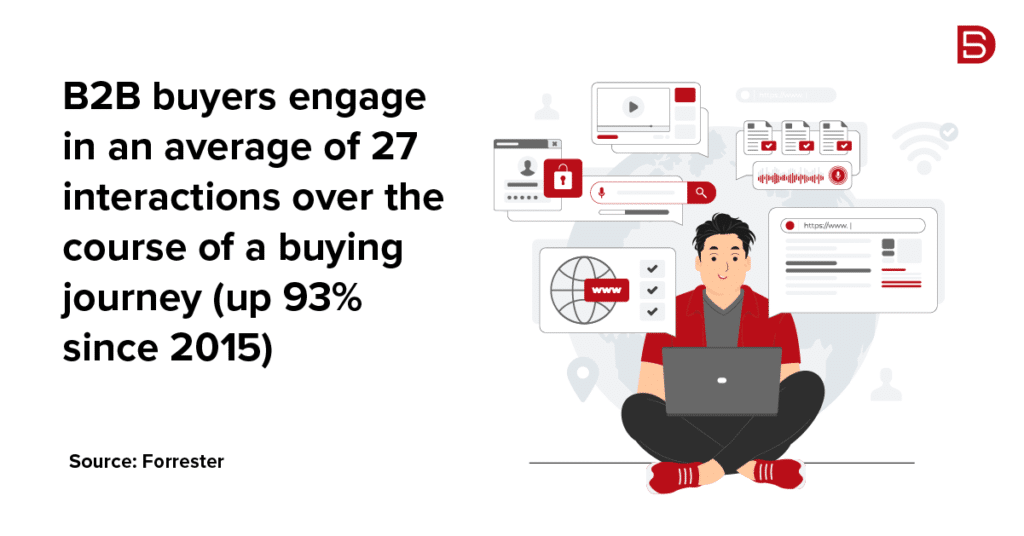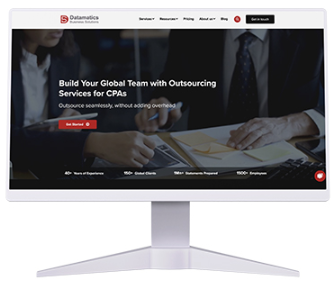If you’re selling B2B, chances are you’re not talking to just one person—navigating a buying group of four to six individuals. Each voice in this group brings unique priorities and needs, making a one-size-fits-all approach a non-starter. Buying groups mix decision-makers, stakeholders, end-users, and gatekeepers. Among the heated conversation in the boardroom, you can hear the faint voices of people, who may not hold titles of power but wield significant influence during decision making.
These are the micro-influencers. The unseen players within buying groups are the ones quietly swaying the decisions that could transform your bottom line. But they’re notoriously hard to spot. You might think that focusing on the apparent decision-makers—the big titles and the corner-office executives—is enough. But it isn’t. The most critical insights often come from unexpected corners of an organization. And if you’re only talking to the usual suspects, you’re missing the secret sauce of successful account-based marketing (ABM). Therefore, identifying these micro-influencers and learning how to engage them effectively becomes your ultimate goal.
Let’s decode who these elusive figures are. How do you find them? Most importantly, how do you connect with them in a way that makes them your champions within the buying group?

The Subtle Power of Micro-Influencers
Suppose you research these micro-influencers in buying groups, but they do not have active LinkedIn profiles. Most of them work as domain experts, analysts, and operation managers. They are the ones who come in when the team needs validation regarding the product’s specs or service’s feasibility.
Their one statement, “This solution will solve our problem,” is enough for the buying groups to decide. The real challenge here is that they don’t consider themselves “influencers” because their influence is unexpected but profound. They’re often more accessible than the C-suite, yet their opinions hold disproportionate power.
However, their priorities and their pain points differs. Hence, they prefer straightforward and practical communication, a different approach from that used to communicate with VPs and CEOs. Therefore, tailor your communication around their painpoints and practical solutions.
Spotting Micro-Influencers in the Wild
So, how do you find these mysterious figures?
 Select an element to maximize. Press ESC to cancel.
Select an element to maximize. Press ESC to cancel.1. Map the Decision-Making Web
If you keenly observe, every buying group works like a spider’s web. Every team member strengthens the web with strong threads, where who takes care of important aspects like collecting information, feedback, and building consensus.
Spotting these influencers isn’t easy, but it’s not impossible either if you follow the following steps.
- Analyze internal networks: Use LinkedIn Sales Navigator or similar tools to identify second-tier connections.
- Ask questions: During discovery calls, subtly probe about team roles. For example, “Who usually evaluates these solutions on your team?”
- Listen for cues: Pay attention to names repeatedly mentioned in meetings or emails. They’re often micro-influencers.
2. Look Beyond Titles
In buying groups, a data analyst or product specialist is more key in decision-making than their VP or CEO, so do not get distracted by hierarchy; in order to spot these influencers, look for:
- Active participants: Those who ask pointed questions in webinars.
- Content sharers: Team members sharing or commenting on industry-specific articles on social media.
- Engaged responders: People who respond promptly to your emails or show enthusiasm in meetings.
3. Leverage Intent Data
To understand the behavioral patterns of what’s better than having intent data. Analyze who is engaging with your content or visiting your website; for instance, an analyst who downloaded your eBook or whitepaper might not close the deal but could hold the keys to influencing it.
4. Observe Internal Communication Patterns
If you observe, these micro-influencers ask key questions or follow up after meetings. So, pay close attention to email threads, meeting recaps, or CRM notes. Using tools like email tracking software can also help pinpoint individuals who frequently engage with your proposals or resources.
Engaging Micro-Influencers
Now that you have figured out who these micro-influencers are, the real challenge is how to engage with them due to their anonymous identity. How do you engage with them without alienating them?
1. Speak Their Language
If you plan to pitch these key players with industry jargon or big promises, please don’t bother because they are the ones working on the ground level and the ones with a practical approach. So to reach them, do these instead:
- Focus on specifics: Highlight how your solution addresses their granular challenges.
- Be concise: They don’t have time for long-winded pitches.
- Use data: Facts and case studies resonate deeply with this audience.
 Select an element to maximize. Press ESC to cancel.
Select an element to maximize. Press ESC to cancel.2. Build Trust Gradually
Trust isn’t earned in a single interaction. Build credibility through:
- Educational content: Offer webinars, eBooks, or articles that make their jobs easier.
- Consistency: Follow through on promises, no matter how small.
- Empathy: Show genuine understanding of their challenges.
3. Empower Their Voice
Micro-influencers in buying groups organization thrive on recognition. Make them feel valued by:
- Acknowledging their input: “Your feedback was instrumental in refining this proposal.”
- Providing platforms: Invite them to roundtables or industry panels where their expertise shines.
- Creating co-branded opportunities: Offer to collaborate on thought leadership pieces.
4. Tailor Your Communication
While the big-picture decision-makers might prefer strategic overviews, micro-influencers appreciate granular details. Share:
- Technical documentation: Show them exactly how your solution works.
- Case studies: Highlight successes that are directly relevant to their challenges.
- Demo opportunities: Allow them hands-on experience to validate your claims.
What Not to Do
when it’s about communicating with micro-influencers of a buyer group, knowing what not to do is as important as understanding what to do. Here’s how to steer clear of some common mistakes.
Don't oversell
Most micro-influencers work at the ground level, so they know the real problems and are well-versed in the solutions they need. So don’t prepare your pitch with flashy promises or aspiring results. Try to be practical and straightforward about your solutions. To make your pitch credible, include compelling use cases and let them see the real-life outcome of your solutions.
Don't ignore their boundaries:
Understand whom you are dealing with here. Micro-influencers often juggle multiple tasks and other responsibilities, so bombarding them with excessive emails and follow-ups on presentations can be bad. Instead, try to provide them with actionable insights, helping them to make informed recommendations within their buying groups.
Don't ignore them
Micro-influencers’ opinions can change the outcome of the buying group decision. So, ensure you don’t avoid them while strategizing your buying group’s acquisition. Missing this important step may lead to misalignment or friction during the engagement with buying groups. So, smartly engage with these micro-influencers from the start, seek their input, and make them feel valued. This approach will help micro-influencers with valuable insights and strengthen your case with the buying groups
Real-Life Case Studies Where Micro-Influencer Engagement Done Right
1. Tech Start-ups
A software company identified a project manager as the micro-influencer within a mid-sized firm’s buying group. Focusing on the manager’s need for seamless integration with existing systems, the company tailored its pitch to address this concern. The result? The manager became their internal advocate, pushing the proposal to the C-suite.
2. Manufacturing Firms
A vendor for industrial equipment engaged with an operations supervisor who was pivotal in evaluating machinery performance. By providing detailed specs and offering a trial period, the vendor won the supervisor’s endorsement, which led to a $1 million deal.
To Conclude
Sometimes, it is challenging to spot these micro-influencers, but when done right, engaging with them becomes easy. They may not be the ones who decide, but they are definitely the ones who influence. Engaging with them successfully makes them your inside allies who will amplify your value within the buying groups.
Therefore, take the time to identify, understand, and engage these pivotal players. It might require a shift in strategy and perspective, but the results will speak for themselves. In the end, success isn’t about who you know. It’s about who will stand up and say, “This is the solution we need.”
Now that you have figured out how to find these micro-influencers and engage with them effectively, ensure you include their needs in your data solutions, making them feel heard, understood, and empowered. Be their friend and watch as they open the doors to buying groups’ success.
Buying groups have become an integral part of most sales strategies, but people often find themselves confused or challenged about how to engage with them. If you want to save your resources and time and also wish to have warm leads ready to convert in your sales pipeline, write to us at marketing@datamaticsbpm.com, and we will help you reach your target buying groups effortlessly with our demand generation services.

Paul van de Kamp


